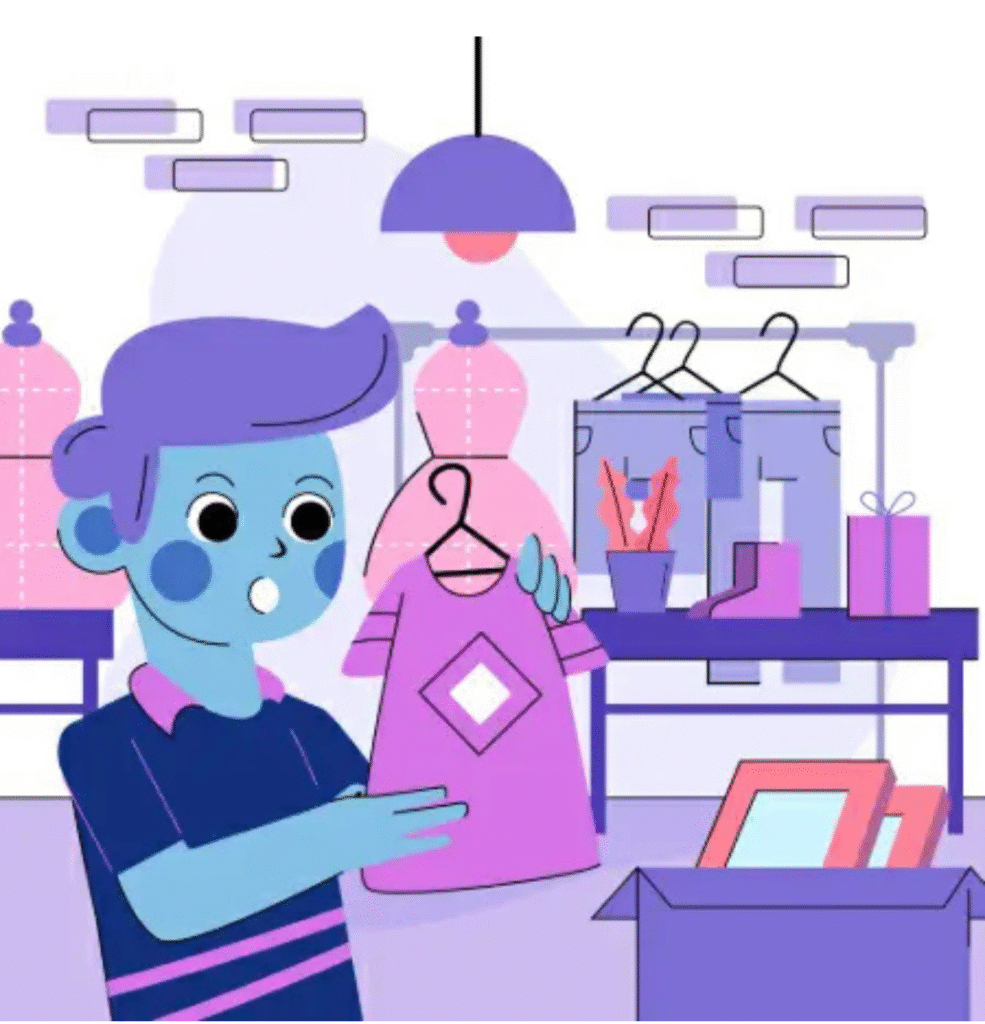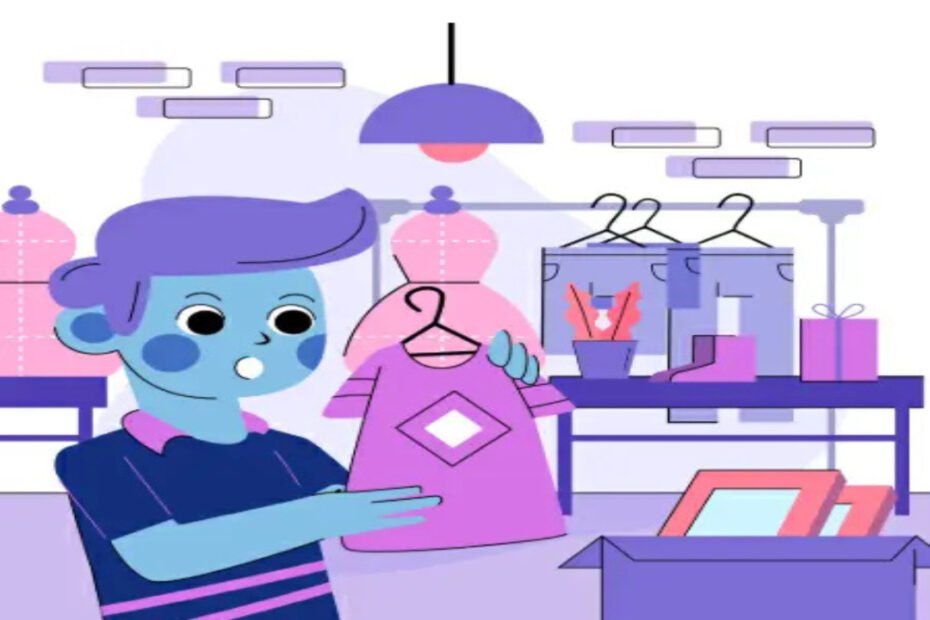Visual merchandising is a practice that goes beyond simply organizing shelves or displaying items. It is a set of actions aimed at building the brand’s visual identity, transforming the store environment through elements such as design, layout, lighting, decoration, and how products are presented.
Everything, from the storefront to the interior details, is designed to create impact and win over the customer at first contact.
You have probably seen this type of strategy on special dates, such as Christmas, Mother’s Day, Black Friday, or New Year’s Eve. Or even in everyday situations, when visiting pharmacies, markets, malls, or fashion stores.
The truth is that Visual Merchandising arouses emotions and stimulates purchasing decisions. When well planned, it arouses curiosity, grabs attention, and increases the chances of the consumer taking the product home.
If you want to better understand what Visual Merchandising is, how it works, and how it can boost your business, keep reading. Below, we will show you everything about Visual Merchandising and share practical tips applied by professionals in the field.
What is Visual Merchandising?
Visual merchandising is a practice aimed at transforming the sales environment into an engaging experience that can directly influence purchasing behavior. The store window is one of the main visual merchandising resources in physical retail.
But the concept goes much further: it involves visual communication resources, strategic product placement, and even principles of consumer psychology.
Applying this technique consistently at the point of sale helps to create more memorable experiences, stimulate the desire to buy, and build customer loyalty. Because it involves different areas of knowledge, its use requires careful planning to ensure that results are achieved.
The goal of visual merchandising is to enhance the commercial space, differentiating the store from the competition and making it more attractive to passersby. In this process, creativity plays a fundamental role, as original ideas have the power to make an immediate impact on the shopping journey.
Therefore, whether updating storefronts, reorganizing shelves, or creating new highlights, adopting visual merchandising techniques can be the differentiator that ensures greater customer engagement and improves sales performance.
In addition, it can also be applied in shopping malls, supermarkets, pharmacies, and even e-commerce, through well-produced photos, visual descriptions, and organized layouts.

How does Visual Merchandising work?
Many companies have already understood the power of visual merchandising and, as a result, are investing in unique projects, such as concept stores. These spaces are created precisely to convey identity, values, and style, going beyond the simple function of selling products.
According to research by the Retail Design Institute, visual appearance plays a decisive role in purchasing behavior within retail. It is precisely for this reason that several companies choose to develop concept stores, designed to communicate the essence of the brand and reinforce its values to the public.
A good example is Melissa, which has a store on Oscar Freire Street in São Paulo. The location features an innovative, constantly updated design that transforms the visit into a unique sensory experience.
There, the store functions as a true living showcase for the brand, reinforcing its essence and positioning itself as a benchmark in the market. In addition to Melissa, we will show other examples of Visual Merchandising, so keep reading.
The importance of visual merchandising for business
When applied correctly, visual merchandising becomes a competitive advantage. It helps convey the company’s values, strengthen brand identity, attract customers, and boost results.
In addition, data collected at the point of sale, such as foot traffic or purchase frequency, can guide adjustments to the strategy, making it even more effective.
Visual merchandising no comércio eletrônico
In e-commerce, visual merchandising is no longer just a differentiator; it has become indispensable. Here, the focus goes beyond displaying products; it is about offering a clear, practical, and attractive shopping journey.
This includes structured page design, intelligent category organization, the use of high-quality photos and videos, and even features such as advanced search filters and personalized suggestions. Everything must work together so that the customer feels like they are exploring a real storefront, even from a distance.
With complete descriptions, well-produced images, and a functional layout, e-commerce manages to align aesthetics with practicality, increasing the chances of conversion and building greater consumer loyalty.
How to create visual merchandising in practice
Visual merchandising is a resource that improves the shopping experience, functions as a marketing tool, and also contributes to customer loyalty. Here are some ways to put it into practice:
1. Bet on the showcase
The storefront is the store’s calling card. It needs to spark curiosity and tell a story from the very first glance.
Invest in creative elements, strategic lighting, signage, digital displays, and even art installations that speak to the brand’s style. The goal is to create a memorable experience that goes beyond seasonal dates.
2. Define key points
Create visual areas that draw the customer’s gaze directly to the desired product or information. Test the view from different angles and ensure that the main item stands out in the composition.
If you use decorative elements, such as sand in a summer collection, remember that the product should be the star of the show.
3. Use visual storytelling
Connecting the product to a narrative is a powerful way to engage. Use signage that clearly and objectively shows the benefits of the item.
Instead of long texts, use impactful headlines, highlighted advantages, and, when possible, the price. This helps consumers immediately visualize the value of the purchase.
4. Maximize product exposure
A well-planned layout increases the chances of purchase. Choose circular layout models, which increase customer contact with products.
In the aisles, use visual communications to keep consumers engaged and explore different areas of the store with organized displays, but without visual pollution.
5. Take advantage of empty spaces
Areas without exposure can also contribute to the strategy. Use these locations to communicate product information, share customer testimonials, introduce suppliers, or create connections with lifestyles that resonate with the brand.
For example, a furniture store can display images of a family gathered in a cozy environment, while a jewelry store can associate its pieces with sophisticated moments.
6. Create multisensory experiences
Many retailers focus their efforts solely on the visual appeal of their displays, forgetting that the other senses also play an essential role in the shopping experience.
To fully engage the customer, it is necessary to think about a multisensory approach, also called sensory branding.
- Vision: Visual stimuli are powerful allies in guiding consumer attention. Colors, contrasts, lighting, and organization can direct the eye to the right product and influence the amount of time spent at a particular point in the store.
- Hearing: Background music has a direct influence on behavior. Softer music can encourage customers to spend more time exploring, while more upbeat rhythms stimulate quick purchases.
- Touch: Offering the chance to touch, feel, and try out products increases consumer confidence and facilitates the purchase decision.
- Smell: Scent marketing is used by major brands because aromas activate emotions and memories. A pleasant smell can create a positive association with the store and even become a brand identity.
- Taste: For businesses that work with food and beverages, allowing tastings acts as a sign of trust—as effective as trying on clothes before buying.
7. Use strategic color schemes
Colors have the power to evoke emotions, attract attention, and even influence purchasing behavior. That’s why choosing the right palette is essential in visual merchandising.
You can go for contrasting combinations, such as black and white, or monochromatic variations, such as different shades of blue or red. More than just aesthetics, color should reflect the brand’s personality and speak to the target audience.
Ask yourself:
- What feeling do I want to convey with this environment?
- Does this palette match the style of my ideal customer?
- Do my colors stand out from those used by competitors?
A boho boutique, for example, may adopt earthy tones to reinforce its connection with nature and freedom, while a modern store may explore strong, minimalist contrasts.
8. Highlight promotions in an attractive way
Special offers need to be communicated clearly. It is not enough to simply offer discounts; you need to make them visible and impactful.
Eye-catching stickers, colorful banners, digital banners, or signs with large letters help highlight promotions. Place these elements in high-traffic areas or near the products on sale to ensure that consumers immediately notice the benefit.
9. Invest in planned lighting
At physical points of sale, lighting should enhance products, creating focus and atmosphere. In the digital environment, attention should be paid to the quality of photos: well-lit, high-resolution images increase the desire to buy and convey credibility.

Key advantages of Visual Merchandising
Now that you understand what visual merchandising is, it’s time to find out what results this strategy can bring to your business. Here are some of the main benefits:
Highlight in product presentation
When applied strategically, visual merchandising enhances the display of items, creating an engaging experience for the consumer.
Points of sale can be set up to showcase new releases, provide access to detailed information, allow testing, and even share other customers’ perceptions, helping to highlight the product’s unique features.
Attracting new customers
One of the main goals of this practice is to attract the attention of those passing by your establishment and make them want to come in. To achieve this, it is essential to invest in creative resources, striking design elements, and innovative forms of visual communication that make your store stand out.
Sales promotion
By providing more complete and immersive experiences, the chances of conversion increase considerably. Many consumers still prefer to interact with the product before purchasing, and a well-planned space with an attractive look can be the deciding factor in closing the deal.
Strengthening brand identity
In addition to selling more, visual merchandising is a powerful opportunity to reinforce your brand image. Color palette, logo, communication style, and even the ambiance of the space help convey your identity and create stronger connections with your audience.
Types of visual merchandising
Have you noticed that visual merchandising is much more than just decorating and making the store look nice? It is a strategic resource for increasing audience engagement and stimulating sales. But it is worth noting that there are different ways to apply this technique.
Showcases
Storefront windows are perhaps the most traditional example of visual merchandising. They serve as the store’s calling card and are designed to pique the curiosity of passersby. They can be used to display new products, special promotions, or even convey the essence of the brand.
Creativity is essential here. A well-planned window display not only presents products clearly, but also helps customers imagine how these items could fit into their routine. Often, this is the first direct contact with potential buyers.
Interactive experiences
With the evolution of retail, contact between the physical and digital worlds has gained ground. Touch screens, smart mirrors, augmented reality, and even playlists personalized by customers themselves are some examples of actions that transform a trip to the store into something memorable.
It is not necessary to invest only in big technologies: even a chatbot at the point of sale can create interaction and generate proximity with the consumer.
Mannequins
Mannequins remain one of the most widely used resources in fashion retail. They help to show combinations of clothing and accessories in real proportions, allowing customers to better visualize how the item will look on their body.
There are models of different sizes, genders, and materials, which can be chosen according to the profile of the audience the brand wishes to reach.
Checkout area
The checkout area is often underestimated, but it is a strategic part of the point of sale. This is where many impulse purchases take place, such as small accessories, treats, or complementary products.
Investing in organized and attractive visual communication in this area can significantly increase the average ticket size for each purchase.
External signage
Signs, banners, digital panels, and other elements placed outside the store are also part of visual merchandising. They serve as the first point of contact with consumers, guiding them to the entrance.
It is important that they are clear, objective, easy to read, and always up to date with recent information or promotions.
Seasonal decorations
Holidays and seasons are also great opportunities to transform the environment and highlight products.
Some common examples include Christmas window displays, back-to-school campaigns, Halloween, Valentine’s Day, or even summer and winter collections. In addition to creating an emotional connection, this type of display often drives souvenir or impulse purchases.
How to evaluate the results of visual merchandising?
Assessing whether a visual merchandising strategy is really paying off goes beyond observing sales growth. To get a clearer picture, it is essential to analyze indicators that connect the consumer experience with business results.
An efficient way to do this is to track the path taken by customers within the store. This allows you to identify which sectors attract the most attention and where customers abandon their purchases. In the digital world, heatmap tools and user behavior analysis are great allies in this process.
Another important point is to observe the conversion rate related to specific storefronts or campaigns. Instead of looking only at total sales, compare the performance of products that were highlighted in a physical display window or on a digital banner with other items.
This makes it possible to understand whether the visual presentation really contributed to increasing attractiveness. It is also worth tracking the average time spent in the store. In physical stores, this can be measured with sensors or simple observation.
In e-commerce, Google Analytics data provides this information. Usually, the longer this time, the more engaging the experience created by visual merchandising.
A very useful practice is to perform A/B exposure tests: change the layout, lighting, or grouping of products and check which scenario generates more interaction and conversion. Often, small adjustments result in big improvements.
Another interesting resource is quick satisfaction surveys. Asking customers if they found it easy to navigate the store and clearly find what they were looking for is a good gauge for evaluating the effectiveness of visual communication.
Inspiring examples of Visual Merchandising
To help you better understand the role of visual merchandising in a business, we have decided to present some examples of successful visual merchandising. Let’s take a look!
Zara
Zara is known for investing little in traditional advertising. Instead, its stores are designed to reinforce the brand experience. Spacious, well-lit environments with impeccable product organization are the company’s true calling card.
Nike
Nike relies on striking window displays to attract attention. During launches or promotional periods, the brand uses large letters, bold colors, and prominent products to create a sense of urgency and immediate desire.
Apple Store
The Apple Store concept is a classic example of a differentiated shopping experience. With large tables and accessible products for testing, customers interact directly with the devices. Targeted lighting and minimalist layout reinforce the brand’s premium proposition.
Bis
For the launch of Mini Bis, the brand created a creative installation: giant packaging in the middle of a shopping mall. The unusual action attracted attention, aroused curiosity, and stimulated consumption, transforming a simple launch into a memorable experience.
Have you learned what visual merchandising is?
We hope this article has helped you understand the role of good visual merchandising and how it can directly impact a brand’s success.
This practice goes far beyond simply displaying products; it serves as a strategic communication tool, capable of attracting new consumers and strengthening your company’s image in the market.

